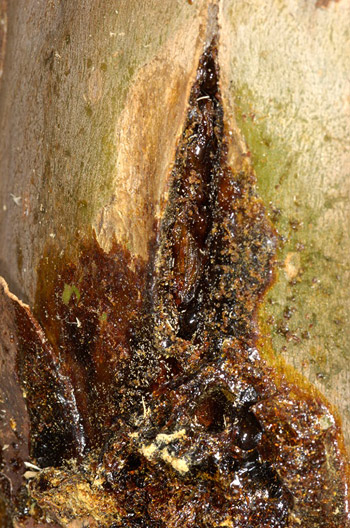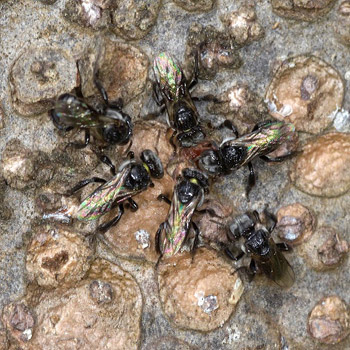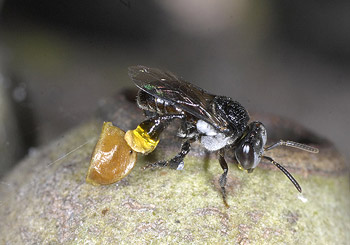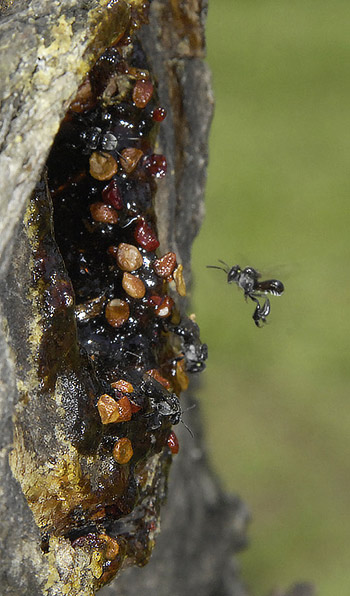Trees used for resinPlant resins are an absolutely essential part of the forage needs of stingless bees so consideration of the presence of this group of trees/shrubs is important in any planting.There are another group of solitary bees which also gain benefit, and that is the Megachilid resin bees PLANT
DESCRIPTION
PHOTO
Corymbia citriodora
Used by stingless for resin, at sites on the trunk where natural splits in the trunk cause tissue damage and release of resin that is useful to the bees. The bees keep working the wound to keep the resin flowing.
 Syncarpia glomulifera
Observed source of resin
Agathis robusta (Kauri pine)
Observed source of resin from small weep sites in bark which like with the lemon scented gum, are kept flowing by the bees continually removing the resin.
 Callitris spp
Popular source of resin and some are small to medium trees so can be considered for medium sized blocks.
Corymbia torelliana (weed)
Addictively and damagingly popular source of resin from seed capsules as they ripen. The bees collect the resin and seeds in January -February each year. The accumulation of seeds especially at times causes blockages in some boxes. It is a time when bees should be watched closely.
  Xanthorrhea spp
Likely to be resin source
Araucaria cunninghamia (Hoop Pine)
Corymbia species
Bloodwood is a likely source
Next: Plants Providing Leaf Material for Leafcutter Bees (Saves the roses) |

